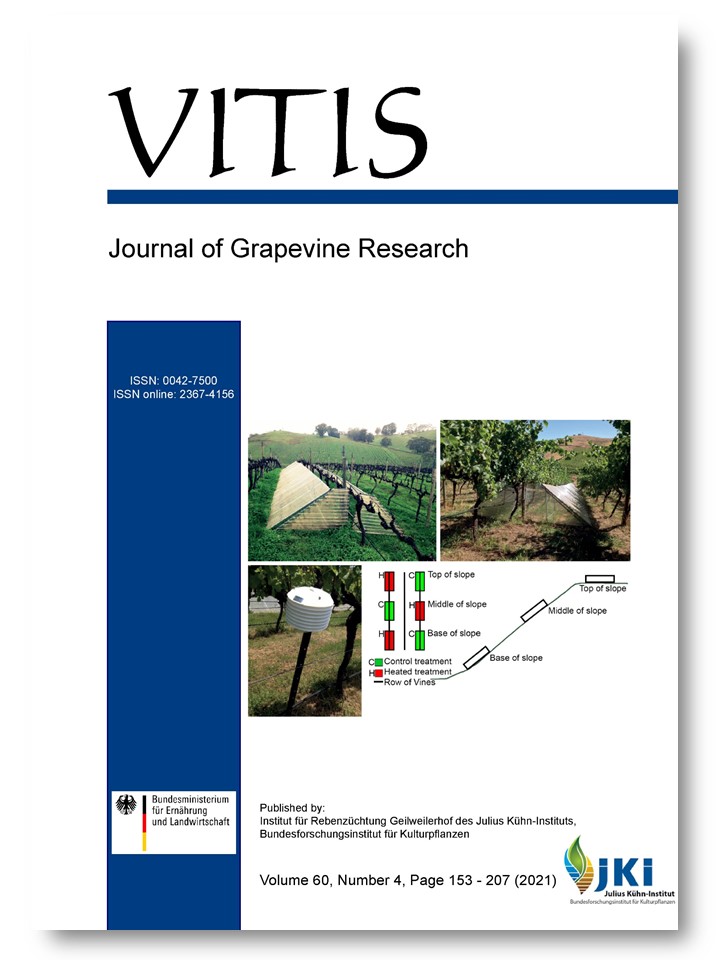The interplay between hormone signaling and defense gene expression in grapevine genotypes carrying genetic resistance against Plasmopara viticola
DOI:
https://doi.org/10.5073/vitis.2021.60.195-206Abstract
The present study aimed to investigate plant defense related pathways during Plasmopara viticola infection in Vitis vinifera varieties. Plant material consisted of 'Chardonnay' (no Rpv), 'Regent' (Rpv3-1), 'Bronner' (Rpv3-3+Rpv10), 'Calardis Blanc' (Rpv3-1+Rpv3-2), and the breeding selection GF15 (Rpv1+Rpv3-1). Gene expression analysis was carried out for the varieties 'Regent', GF15, 'Bronner', and 'Chardonnay'. Hormonal quantification was performed for jasmonic acid (JA), salicylic acid (SA), abscisic acid (ABA), indole-3-acetic acid (IAA), and trans-zeatin-ribose (tZR). The samples were collected from plants cultivated in vitro inoculated with Plasmopara viticola sporangia, and collected at 0, 1-, 3-, 5-, and 7-days post inoculation (DPI) for gene expression; and 0, 3, 5, and 7 DPI for hormonal quantification. The results showed an interaction between genotype and time post inoculation in gene expression and hormonal pathways linked with pathogen recognition. Both jasmonate and salicylic acids were involved in the resistance response. The role of stilbenes acting against the pathogen at different times was also confirmed. Changes in the expression of genes linked to cell defense were observed in all evaluated genotypes; however, genotypes with R-loci responded more quickly than the variety without R-loci, activating mechanisms of cell death, resulting in symptoms of hypersensitivity.
Downloads
Additional Files
Published
Issue
Section
License
Copyright (c) 2021 The Author(s)

This work is licensed under a Creative Commons Attribution 4.0 International License.
The content of VITIS is published under a Creative Commons Attribution 4.0 license. Any user is free to share and adapt (remix, transform, build upon) the content as long as the original publication is attributed (authors, title, year, journal, issue, pages) and any changes to the original are clearly labeled. We do not prohibit or charge a fee for reuse of published content. The use of general descriptive names, trade names, trademarks, and so forth in any publication herein, even if not specifically indicated, does not imply that these names are not protected by the relevant laws and regulations. The submitting author agrees to these terms on behalf of all co-authors when submitting a manuscript. Please be aware that this license cannot be revoked. All authors retain the copyright on their work and are able to enter into separate, additional contractual arrangements.



